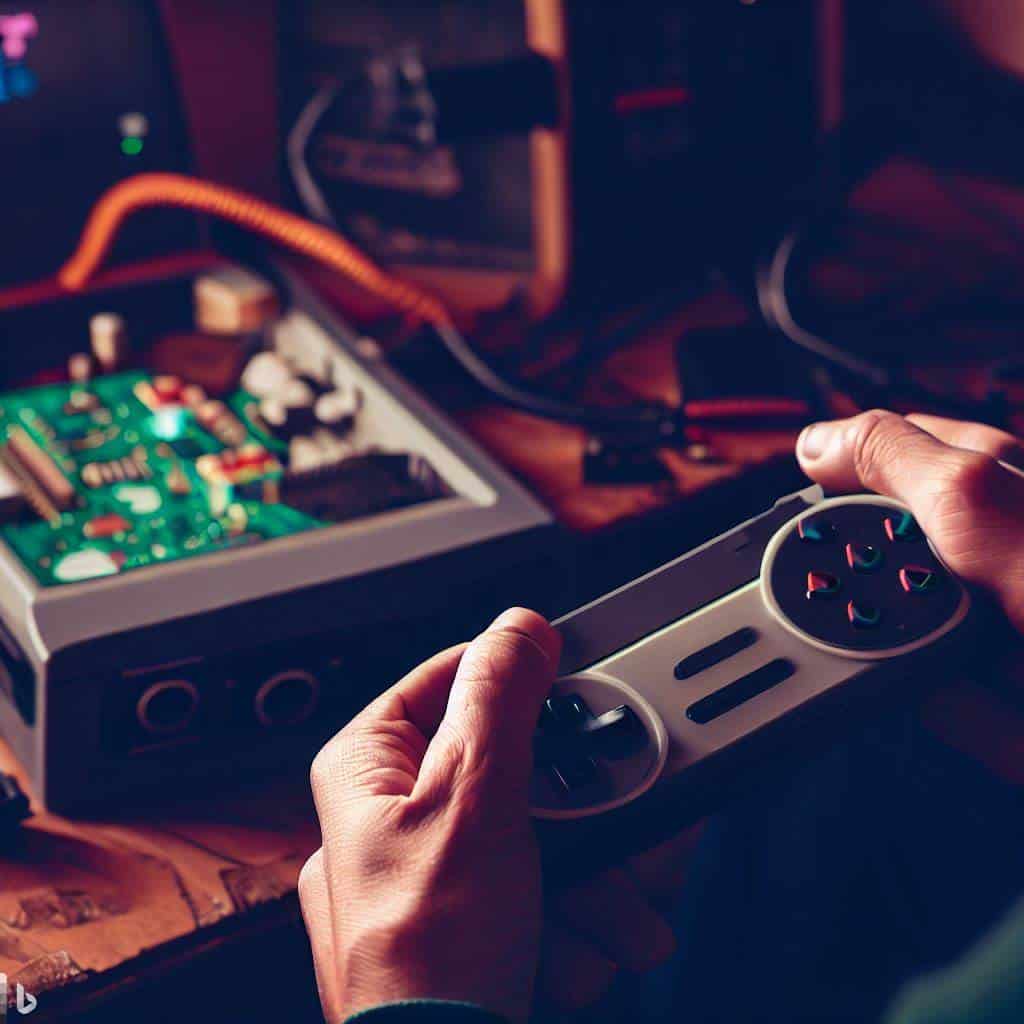Hey there, fellow Raspberry PI and gaming enthusiast! You probably have a soft spot for the classics if you’re anything like me. Remember those summer afternoons spent playing ‘Centipede’ or ‘Zelda’? Ah, the good old days. But what if I told you there’s a way to relive those golden moments without spending a ton of money on a vintage console? Well, enter the Raspberry Pi. This tiny, magical computer gave me the ride of a lifetime, now I’m here to guide you on replicating that nostalgic magic with the Raspberry PI and retropie.
Why Raspberry Pi is Your Time Machine for Retro Gaming
So, how did this love affair with Raspberry Pi begin? Years ago I stumbled upon it in a tech magazine and thought, “This sounds cool and exactly the hobby I have been looking for” Here’s why I’ve become I became hooked on this amazing machine. There are two main reasons for this.
Affordability:
Purchasing a Raspberry Pi only required a modest investment of approximately $35 (or about $90 for the bundle). When considering the cost of a classic gaming console or a contemporary gaming device, it becomes evident why my wallet was elated with this favorable price point.
Versatility:
Beyond gaming, this little computer has helped me with various other DIY projects. It’s like the Swiss Army knife of the tech world. We will cover more of these projects in the future. For now let’s get back to the RetroPie.
Gearing Up: The Essentials Basic PI or Bundle ?
Before diving into Raspberry PI gaming with retropie, we need a few tools. Lets cover these in more detail.
If you are new the all things Raspberry PI you may elect for a bundle. There are many to choose from and could save you money compared to buying each part on it’s own.
Hardware Needs:
- Raspberry Pi: I recommend the Raspberry Pi 4 due to its enhanced capabilities, but even the 3B+ does wonders.
- Micro SD Card (at least 32 GB, Class 10): Speed is crucial. I made the mistake of using an old card once, and the lag almost made me throw the PI out the window!
- Power Supply (5V/3A): Invest in a decent one. My friend once used a cheap adapter and his Pi. Let’s say it wasn’t a pretty sight.
- HDMI cable & Monitor/TV: Any standard screen will do. I repurposed an old monitor, and it works like a charm.
- USB Controllers: Search online, and you’ll find many retro-styled ones. Playing Street Fighter with them? Pure joy.
Software Smarts:
- RetroPie: This is the secret ingredient It’s like an operating system designed for gaming. You can download pre-installed images or install it yourself.
Setting Up Your Raspberry Pi: Let’s Get Technical
Let’s dive into the step-by-step process:
1. Setting Up the Micro SD Card:
- Download the latest version of Raspberry Pi OS (formerly Raspbian) from the Raspberry Pi website.
- Format your Micro SD card using a tool like SD Card Formatter.
- Burn the OS onto the card. I use BalenaEtcher—select the downloaded OS and your SD card, then click ‘Flash!’ Simple. I have used many different Raspberry PI image programs and this is by far the best for Novices and experts alike. Opensource and free to use.
- Once done, insert the SD card into your Raspberry Pi.
2. RetroPie Installation Magic:
- Boot up your Raspberry Pi.
- Connect it to Wi-Fi.The Raspberry PI does an outstanding job of guiding you through it’s setup so it is all ready for your use.
- Install Raspberry PI RetroPie by opening the terminal (that little black screen icon at the top) and typing:
$ sudo apt update
$ sudo apt install retropie
Wait for the magic to unfold. Grab a coffee or reminisce about your favorite childhood game while it installs.
3. Controller Configurations:
- Plug in your USB controllers.
- On booting RetroPie, you’ll see a welcome screen asking you to configure your controller. Follow the prompts—it’s like setting up a new game.

4. Uploading Games (ROMs) To Your New PI Game Console:
Remember, only use ROMs of games you legally own.
- Transfer using a USB drive: Format a USB stick to FAT32. Create a folder named “retropie” and plug it into the Pi. It will auto-create folders. Drop your ROMs into the respective game system folders. Plug it back into the Pi, and voilà, games uploaded!
OR
- SFTP Transfer: Use software like FileZilla. Connect using the Pi’s IP address, username (usually ‘pi’), and password (usually ‘raspberry’). Navigate to
/home/pi/RetroPie/romsand drop your ROMs into the respective folders.
Levelling Up: Tips & Tricks
One of the key advantages I love about Raspberry PIs is you can safely overclock them. There are not as many overclock options as a Gaming PC, but there are significantly fewer components in the PI, too, so squeezing a smidge more power is a bonus.
1. Overclocking:
Overclocking is like giving your Pi some caffeine, boosting its performance. But a word of caution: it can heat up your Pi. Here’s how I did it:
- Open the terminal and type:
sudo raspi-config - Navigate to ‘Overclock’
- Choose a setting that suits you. For example, type:
Moderate - Remember to ensure adequate cooling for your Raspberry Pi. Consider adding heat sinks and a small fan to keep it cool.
2. Personalization Galore:
With RetroPie, you can customize themes and splash screens. I once spent an entire evening doing this (and I don’t regret the time spent!).
- Navigate to ‘RetroPie Configuration.’
- Choose ‘ES Themes’ to download and apply new themes.
Conclusion Raspberry PI Game Console

And there you have it! Your very own retro gaming time machine, ready to transport you back to your cherished childhood gaming days. My journey with Raspberry PI with retropie has been a mix of delightful discovery, occasional hair-pulling, and tons of exhilarating gameplay. Now, it’s your turn. Dive in and game on!
Also engage with the Raspberry Pi community online. I can’t tell you how many times they’ve saved me from tech grief. They’re an absolute treasure trove of wisdom and helpful advice!

